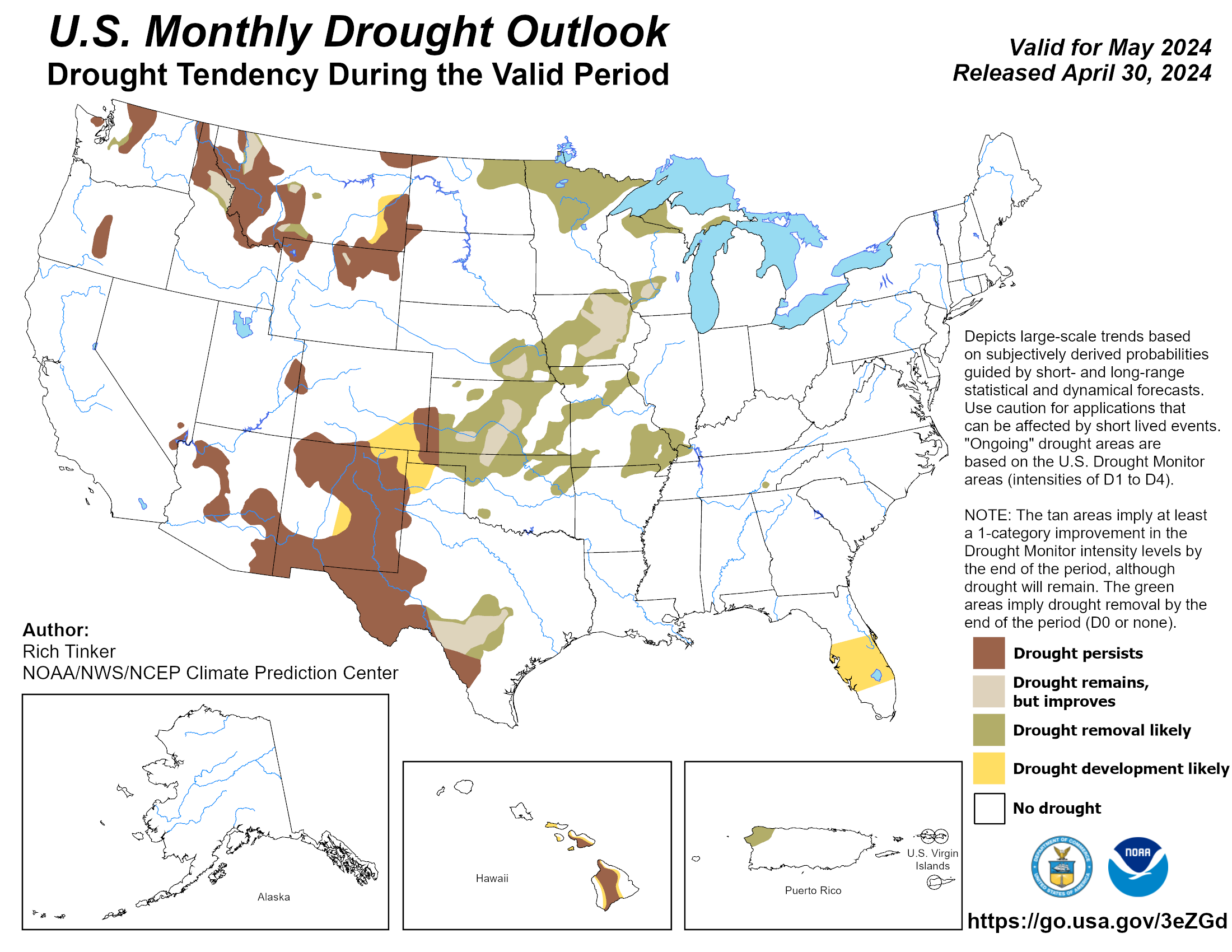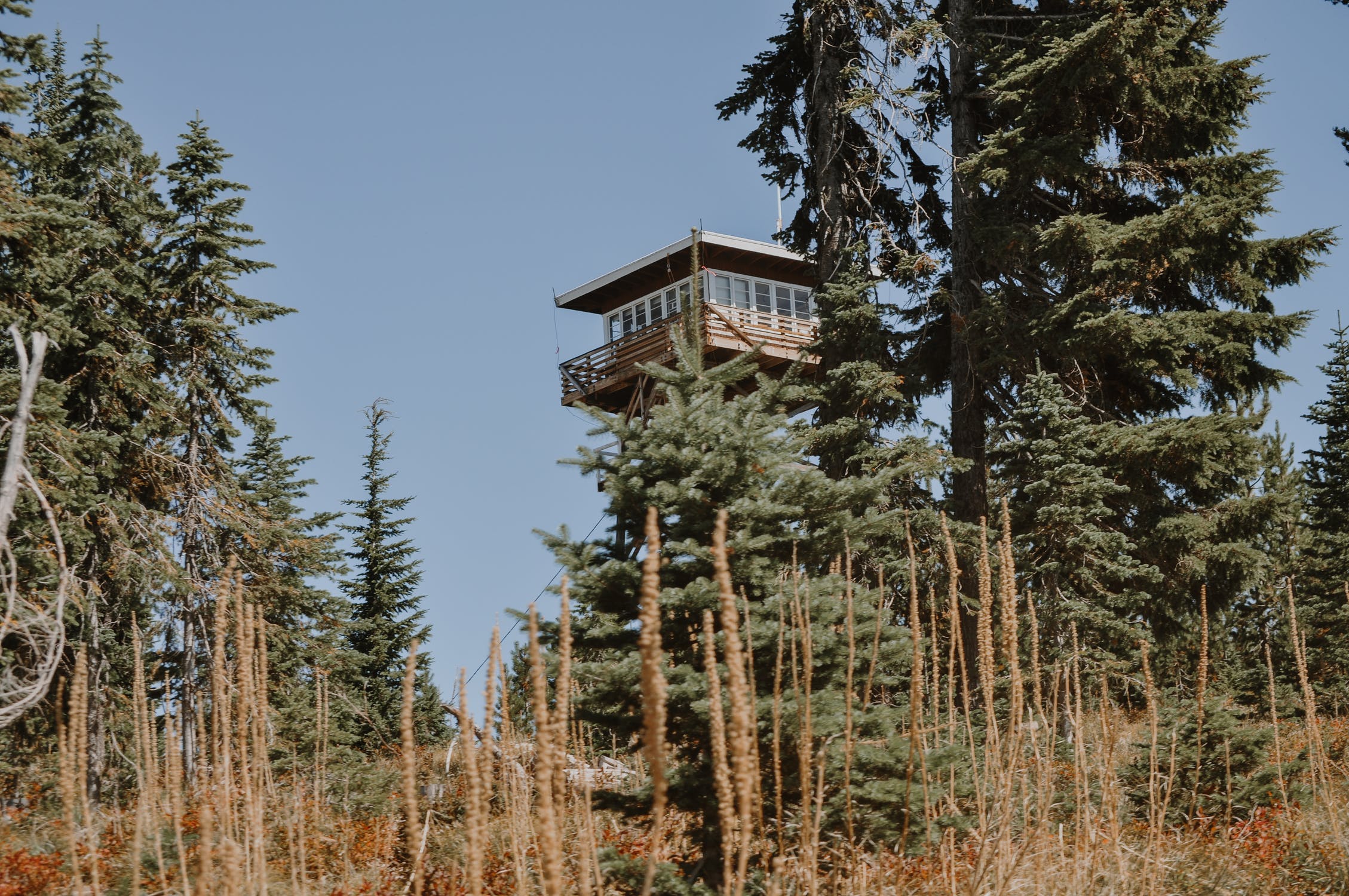The National Interagency Fire Center published the wildfire outlook for the period of May 2024 through August 2024. This outlook is a synthesis of predictions from both Geographic Area Predictive Services units and the National Predictive Services and is a critical resource for wildland fire management. Several key factors influence the wildfire outlook, including weather patterns, fuel moisture levels, and long-term climate forecasts. The full wildfire outlook can be located here.
May Outlook Summary
In April, fire activity in the western U.S. increased slightly but remained at very low levels, while activity decreased in the Eastern and Southern Areas. Short-duration significant fires emerged mainly across the Plains, Southwest, and Upper Midwest. Although wind events occasionally increased fire potential, precipitation often followed across the Plains and Upper Midwest, reducing activity. Year-to-date, the U.S. has seen 240% of the normal acres burned due to a late February outbreak in Texas and Oklahoma, but the number of wildfires remains below average at 76%.
April precipitation was above normal in the northern Plains, Mid-Mississippi Valley, and Great Lakes, but below normal in much of the West, southern Appalachians, Carolinas, and central and south Florida. Extreme to exceptional drought persists in southern New Mexico, with drought conditions also in eastern Iowa, western Montana, and south-central Texas.
Drought Conditions and Improvements
Many areas in the Western U.S., including California, Oregon, and Nevada, are experiencing severe to exceptional drought conditions. These dry conditions increase the likelihood of wildfires, as vegetation becomes more susceptible to ignition and rapid spread. This month’s outlook suggests that these drought conditions are likely to persist or worsen in the coming months, particularly in the Western states. This indicates that the risk of wildfires will remain elevated in these regions throughout the summer.

U.S. Monthly Drought Outlook from May 2024 shows drought persisting across the west and improvements forecasted for the Plains and Midwest.
Wildfire Outlook for May-August 2024
Above normal temperatures are forecasted for much of the eastern and northwestern U.S. in May, continuing through the summer. Higher than normal precipitation is expected for the central Plains and Lower Mississippi Valley in May, while below normal precipitation is forecasted for the Southwest. In addition, above normal significant fire potential is expected for central Florida in May, expanding to much of the Florida peninsula in June, and for portions of the Southwest through August. Below normal potential is forecasted for portions of southern California in May, expanding to much of the state in June and July, with above normal potential for the lee sides of Hawaii, especially Maui and the Big Island, through August. See below for a month by month summary.
May:
- Above normal significant fire potential is expected across much of the Western U.S., including California, Oregon, and Nevada, due to ongoing drought conditions and above-average temperatures.
- Below normal significant fire potential is forecasted for parts of the Midwest and Southeast, including portions of Texas, Louisiana, and Mississippi, where recent rainfall has reduced fire risk.
June:
- Above normal significant fire potential is anticipated to persist across the West, particularly in the Pacific Northwest and Northern Rockies, as dry conditions continue.
- Below normal significant fire potential may continue in parts of the Midwest and Southeast due to expected precipitation and moisture.
July:
- Above normal significant fire potential is expected to persist in the West, with heightened risk in the Northern Rockies and Great Basin regions.
- Normal significant fire potential is forecasted for much of the Midwest and Southeast.
August:
- Above normal significant fire potential is anticipated to continue in the West, particularly in California and the Pacific Northwest.
- Normal significant fire potential is expected across much of the Eastern U.S., with some areas of above normal potential in the Southeast.
Overall, the outlook indicates continued elevated wildfire risk in the Western U.S. throughout the summer months due to persistent drought and high temperatures. In contrast, some relief from wildfire risk is expected in parts of the Midwest and Southeast due to anticipated precipitation. However, it’s essential to remain vigilant and prepared for changing fire conditions, as weather patterns can fluctuate and impact wildfire activity.




